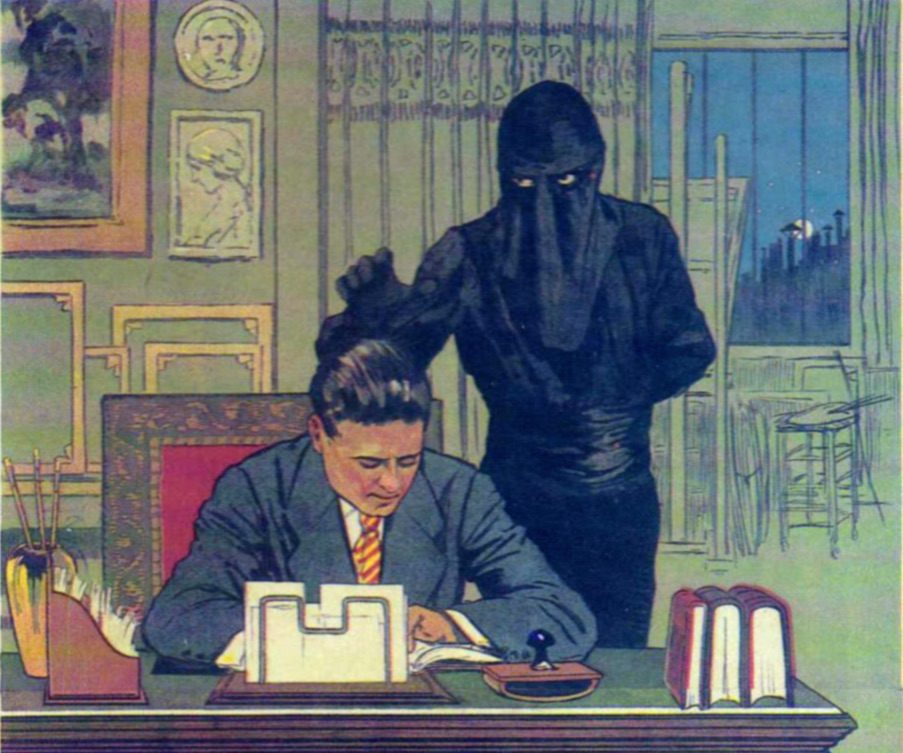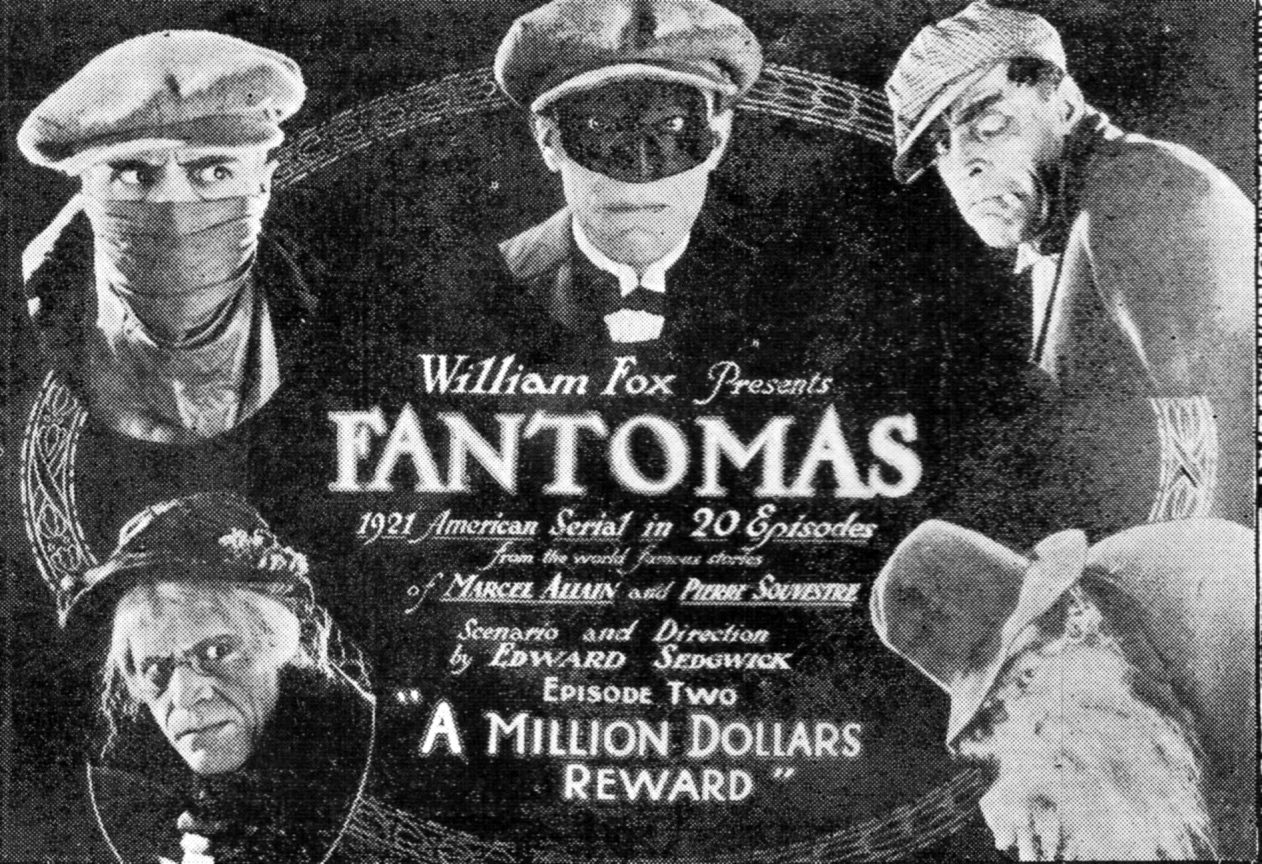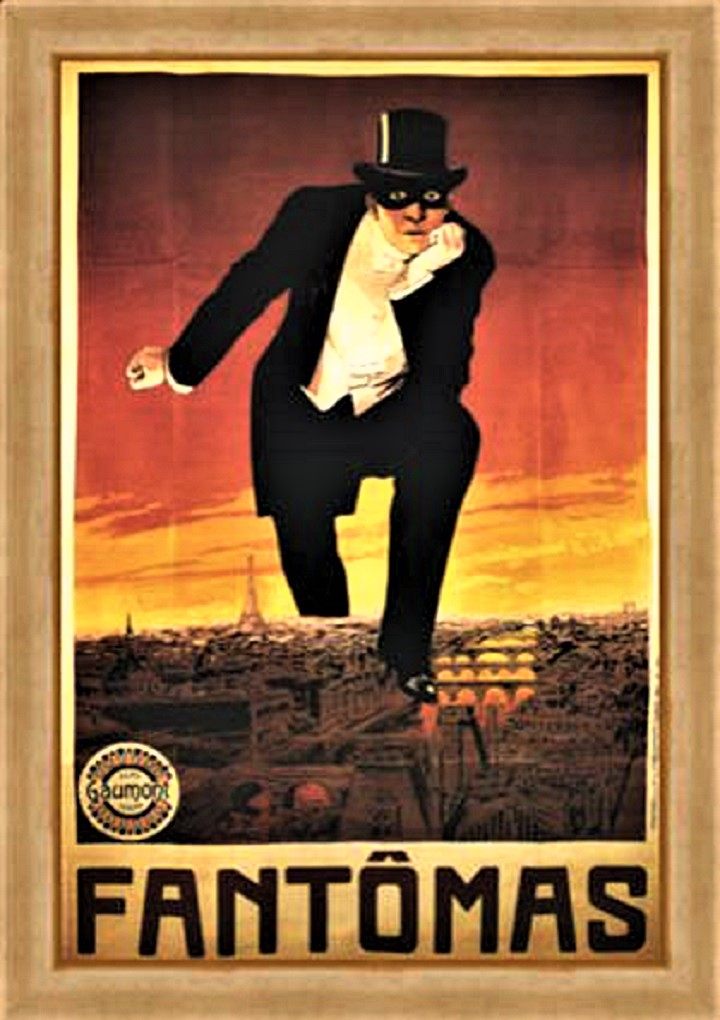The Criminal History of Fantômas, France’s Favorite Fictional Villain
He influenced everything from Surrealism to the X-Men.

As villains go, Fantômas is a nasty one. Created in 1911, he is a gentleman criminal who perpetrates gruesome, elaborate crimes with no clear motivation. He hangs a victim inside a church bell so that when it rings blood rains on the congregation below. He attempts to kill Juve, the detective on his trail, by trapping the man in a room that slowly fills with sand. He skins a victim and makes gloves from the dead man’s hands in order to leave the corpse’s fingerprints all over the scene of a new crime.
His creators called him the “Genius of Evil” and the “Lord of Terror,” but he remained a cipher with so many identities that often only Jove would recognize him. The book that first introduces him begins with a voice asking: Who is Fantômas? There’s no real answer:
“Nobody.... And yet, yes, it is somebody!”
“And what does the somebody do?”
“Spreads terror!”

But Fantômas was incredibly popular in his day—a now-obscure villain who helped define fictional bad guys for the 20th century. His influence shows up everywhere from surrealist paintings to Hitchcock movies and the X-Men comics. Fantômas was mysterious enough that he could be reinvented many times over. But in all those iterations, no one quite recaptured the pure, chaotic evil that defined the original character.
Fantômas was created by two writers in Paris, Pierre Souvestre and Marcel Allain, who first started working together as journalists covering the nascent car culture of the early 20th century. They would sometimes fill space with dashed-off detective stories, which attracted the attention of a publisher trying to make it rich on mass-market fiction. He hired Souvestre and Allain to write a series of gripping novels; their contract required them to produce one a month. They invented Fantômas on the way to their meeting with the publisher and spent the next three years churning out fantastic stories about their arch-villain.
Fantômas was most easily characterized by his crimes, which were aggressively anti-social. He stole; he dissembled; he killed frequently and almost indiscriminately. In one story, a broken wall starts spewing blood from the many victims hidden there. His motivation seems to be the joy of the crime itself.
As a character, he has few distinguishing features. Even in the original books, Fantomas’ identity is malleable. He changes aliases many times over and often only Jove, the detective obsessed with him, would recognize him in his new guise. He’s so mysterious that at times it seems, as the scholar Robin Walz wrote, that Juve might have made him up or be ascribing the crimes of many men to one fabricated villain. When Fantômas does appear as himself, he’s shrouded in a black and a mask obscures his face. “At the end of a thirty-two book cycle Fantômas remains as much a mystery as at the start,” wrote film scholar David Kalat.
This shadowy villain, though, captured the hearts and minds of the French public in the early 1910s. The book series was an immediate hit, as audiences devoured the crime stories, as over-the-top as they were. Film companies battled for the production rights, and within a few years Fantômas had his first reinvention, as the subject of a series of silent films. The books were published with great success in Italy and Spain, where in 1915 Fantômas became the subject of a musical. In the years before World War I, Fantômas was everywhere.

From the beginning of his existence, Fantômas attracted unexpected fans who recruited him for their own purposes. Guillaume Apollinaire, the experimental poet, loved the series: he called it “one of the richest works that exists.” He and the poet Max Jacob started a fan club, La Société des Amis de Fantômas, the Friends of Fantômas Society. The Surrealist movement that followed in their footsteps became obsessed with Fantômas, and René Magritte once recreated the cover of the first novel as a painting. It was a crime of his own—a theft of the original art.
The Surrealists were so attracted to Fantômas in part because his world accorded with the one they were creating in their art. It followed its own logic rather that the rational and buttoned-up rules of polite society. In one Fantômas film, Juve seizes Fantômas at a restaurant, only to find himself hold a pair of fake arms—the villain had escaped! “But how come Fantômas just happened to have a spare set of fake arms with him at the time? If you need to ask questions like these, the magic of Fantômas will elude you,” Kalat wrote. The Surrealists loved it.
Because the original Fantômas series was so popular, it quickly spread across Europe, to Italy, Spain, England, Germany, and Russia, as film scholar Federico Pagello documented. He was one of the first arch-villains to make it into the movies, and the film series starring him was directed by Louis Feuillade, who pioneered the thriller genre of movies. The Fantômas series was one of his first big projects, and in it he experimented with storytelling techniques he’d use in his famous Les Vampires, which features a whole gang of Fantômas-like villains, dressed all in black. The techniques Feuillade invented influenced Fritz Lang, the director most famous for Metropolis, and, in turn, Alfred Hitchcock.

As thrillers grew as a genre, Fantômas and his imitators were spreading around the world. In Italy the character Za la Mort took up the Fantômas mantle; in England, a director created Ultus, who was meant to be a conscious copy of Fantômas. After the real-life evils of World War II, Fantômas’ extravagant villainy had less appeal, though, and he went quiet until the ‘60s, when he was revived in a French movie series, a Turkish movie, and an Italian comic book, as Diabolik. In 1975, a Spanish movie, Fantomas Versus the Multinational Vampires, was made in homage to Feuillard.
Even from his first reimagining, though, when the books were turned into novels, Fantômas was softened. “On the film poster, the arch-villain’s kid-gloved right hand was merely a clenched fist, whereas on the cover of the novel he held a deadly dagger,” wrote Walz. The plot changed, too: in the original story, Fantômas escapes execution by having an actor play his role, and the actor is beheaded before anyone realizes the mistake. In the movie, Juve figures out the plot before the actor is killed and saves his life.
Fantomas - A l’ombre de la guillotine (1913) from George Morbedadze on Vimeo.
More often, though, Fantômas is given a valiant motivation. The director who transformed him into Ultus considered Fantômas a Robin Hood character, with noble motivations, Pagello wrote. When Fantômas came to the U.S., he was cast as more of a gentleman thief than a black-hearted nihilist. When he was revived for as the star of a series of Mexican comic books in the 1970s, Fantômas was more of a hero than a villain; in the X-Men comics, where a character named Fantomex first appeared in 2002, he tries to act as a good-hearted thief but is quickly revealed to have been created as part of a government weapons program.
Even though Fantômas was an iconic villain early in the 20th century, he was too evil to survive in his original form. Writers preferred to make their villains a little bit more knowable, a little bit more rational, and, ultimately, a little less dark.









Follow us on Twitter to get the latest on the world's hidden wonders.
Like us on Facebook to get the latest on the world's hidden wonders.
Follow us on Twitter Like us on Facebook